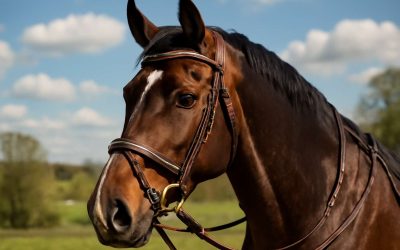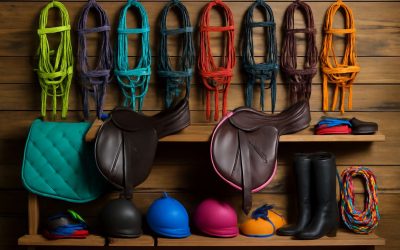
Saddlery is the art of making and repairing saddles and their associated tack, such as stirrup leathers and girths. It also includes the craft of training horses for specific disciplines like jumping or dressage. Saddlery is a long-standing practice, with references in literature dating back thousands of years. It has been a part of every culture that has ridden, including ancient times in Egypt and Greece. The first solid saddle tree was fashioned in 200 BC; this revolutionary build raised the rider above the horse’s back and evenly distributed their weight along the animal’s spine, making the horse more comfortable for longer rides and increasing its useful life.
Saddles are primarily made from leather, which must be maintained to avoid stiffness. The leather can be oiled to keep it supple, and may be covered with a material that adds strength, such as a quilted cotton filler, oiled felt or nylon, or suede. A girth, also called a cinch, is the main strap that holds the saddle in place. It is a wide strap that goes under the barrel, just behind the front legs of the horse, and has either a metal or plastic buckle at one end. A swivel cinch is often used in combination with a girth to allow the rider to adjust the saddle for different riding positions and conditions.
The modern Western saddle evolved from the Spanish war saddles brought by the Conquistadors and adapted by the Mexican vaqueros, then reshaped to suit the needs of the cowboys in Texas and California. It retained the wooden tree, high cantle and deep-dished seat but changed the horn to a shorter, thin horn for roping and added a flank cinch to hold the saddle in place when bucking off a wild cow.
Various types of saddles are used in different equestrian disciplines, such as show jumping, trail riding, roping and cutting. Each saddle is designed to be a good fit for the discipline and the specific horse it will be used on, as well as to match the horse’s physical build. Those who compete in rodeos are encouraged to develop their skills by practicing in different disciplines, which has lead to the creation of a dizzying array of saddle models, from barrel racing to calf roping.
Most saddles are made on a custom basis for each horse, after the horse’s conformation has been analyzed. This allows the rider to feel a comfortable and natural connection with the horse while performing their chosen discipline. For this reason, the best saddles are well-maintained and cleaned regularly to remove sweat and dirt, which can cause discomfort and chafing. Proper cleaning can also prevent the wood from drying and cracking and help extend the life of the saddle. The saddle should be stored in a slightly cool but consistent temperature away from direct sunlight, as excess heat can dry the leather. It is also important to keep in mind that the saddle must be adjusted on a regular basis as the horse’s musculature and nutrition change, to avoid putting an unnatural strain on the animal.



0 Comments